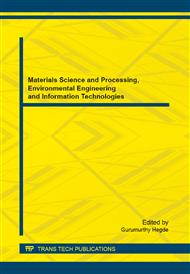p.179
p.183
p.188
p.192
p.196
p.203
p.208
p.213
p.217
Finite Element Analysis of Lightweight Energy-Saving Composite Floor
Abstract:
In order to study the performance of lightweight energy-saving composite floor, the finite element models of composite floor were established, which was based on the composite floor specimens test research. The finite element models were verified rationally and correctly in the paper, through compared with the composite floor test results. The finite element model can be used to analyze the load-bearing capacity of composite floor. Various influencing factors of composite floor with simply supported end were analyzed, such as the span of self-tapping screw, the diameter of self-tapping screw, the strength of thin panel and the elastic modulus of thin panel, etc. The results show that the load-bearing capacity of composite floor increases with the increase of the number of self-tapping screw, the diameter of self-tapping screw, the strength of thin panel and the elastic modulus of thin panel, etc. The load-bearing capacity calculate formula of composite floor was proposed.
Info:
Periodical:
Pages:
196-202
Citation:
Online since:
October 2014
Authors:
Price:
Сopyright:
© 2014 Trans Tech Publications Ltd. All Rights Reserved
Share:
Citation:


